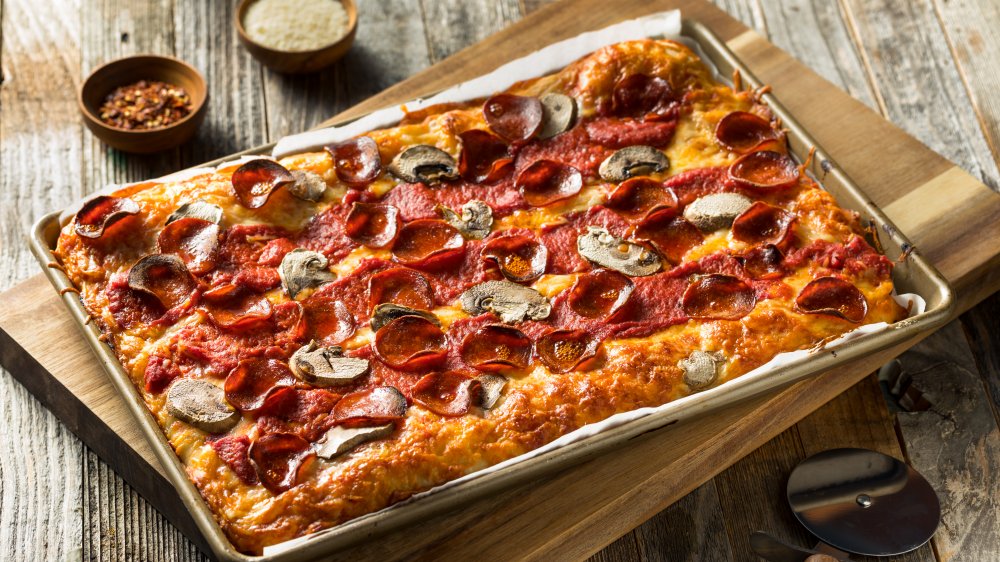This Is What Makes Detroit-Style Pizza So Good
While Detroit-style pizza may be a relative newcomer to the pizza game – having not been invented until the mid-1940s – it has more than its fair share of admirers. But despite its loyal following, it has largely stayed on the sidelines, mostly leaving the bigger cities of Chicago and New York to fight the hotly debated pizza-style wars.
Pizza rivalries notwithstanding, it is an oft-underrated pizza gem that could have only been born in the Motor City. The main secret to its distinctive flavor comes from the pan it is cooked in, which is modeled after the same types of pans auto industry workers used on factory assembly lines to hold oil or small tool parts, according to PMQ Pizza Magazine. This deep pan is made of thick steel and acts more like a cast-iron skillet than a traditional pizza pan (via Pure Michigan). The result is a light and airy crust with a pleasingly crunchy exterior.
The first Detroit style pizza was served at Buddy's Rendezvous
Credit for this invention goes directly to the owners of a local Detroit bar called Buddy's Rendezvous, according to Pure Michigan. In 1946, Gus Guerra, the owner, wanted to spice up his bar menu, and he reached out to his wife, Anna, for help. She had the idea for a new take on a classic dish. Using her Sicilian mother's recipe for the dough, they came up with the very first square Detroit-style pizza, served piping hot.
Specifically, Detroit pizza is normally served at 230 degrees Fahrenheit, with rich tomato sauce, crispy pepperonis, and Wisconsin brick cheddar cheese. The melted cheese and porous crust combine to give the pizza a crunchy, gooey, and buttery flavor without being too oily. The pepperonis are traditionally placed directly on top of the dough, and the red sauce is drizzled on top, which helps prevent the crust from becoming soggy. All this preparation adds up to Detroit's own uniquely delicious take on the classic pizza pie.

